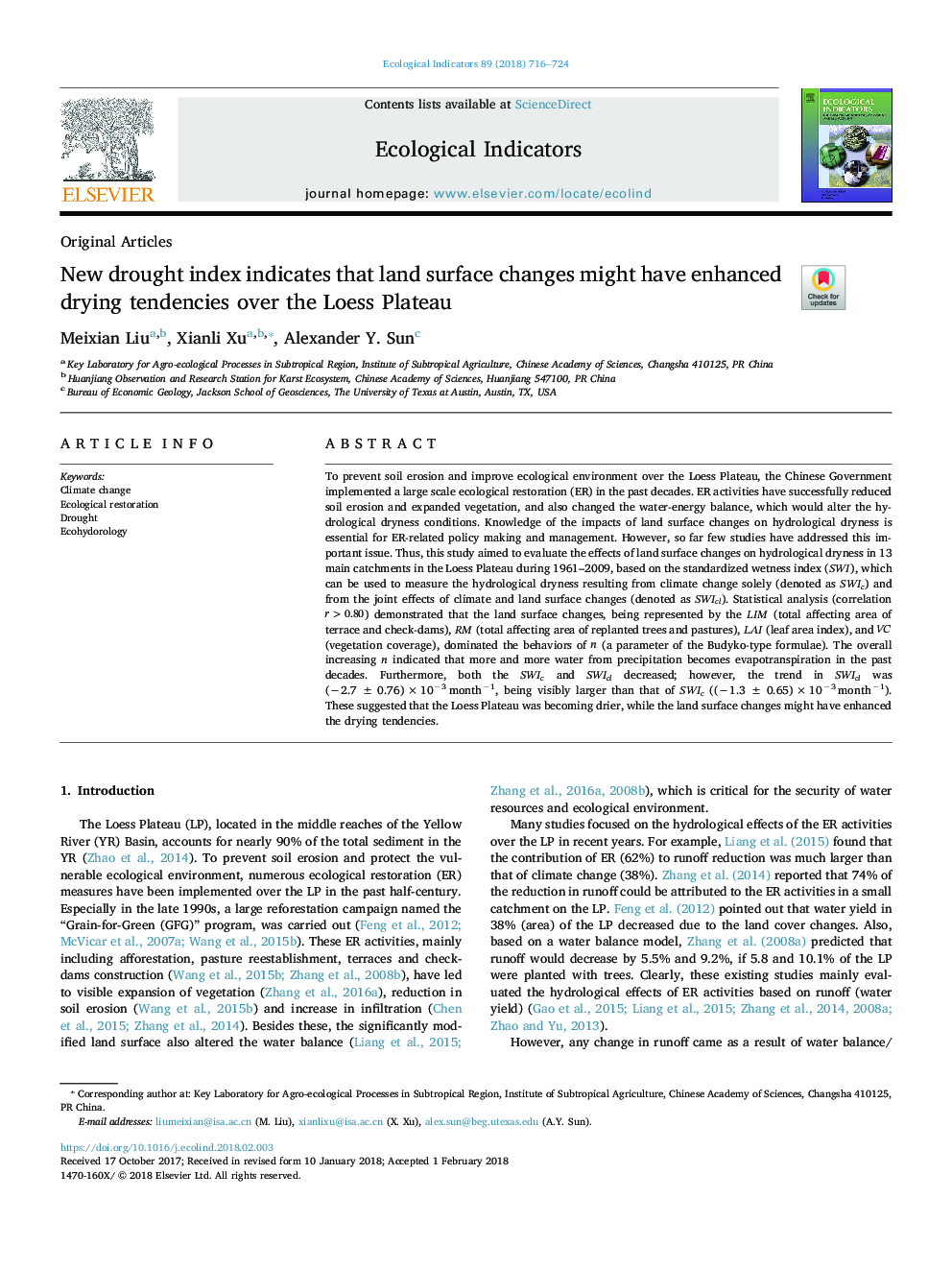| Article ID | Journal | Published Year | Pages | File Type |
|---|---|---|---|---|
| 8845524 | Ecological Indicators | 2018 | 9 Pages |
Abstract
To prevent soil erosion and improve ecological environment over the Loess Plateau, the Chinese Government implemented a large scale ecological restoration (ER) in the past decades. ER activities have successfully reduced soil erosion and expanded vegetation, and also changed the water-energy balance, which would alter the hydrological dryness conditions. Knowledge of the impacts of land surface changes on hydrological dryness is essential for ER-related policy making and management. However, so far few studies have addressed this important issue. Thus, this study aimed to evaluate the effects of land surface changes on hydrological dryness in 13 main catchments in the Loess Plateau during 1961-2009, based on the standardized wetness index (SWI), which can be used to measure the hydrological dryness resulting from climate change solely (denoted as SWIc) and from the joint effects of climate and land surface changes (denoted as SWIcl). Statistical analysis (correlation r>0.80) demonstrated that the land surface changes, being represented by the LIM (total affecting area of terrace and check-dams), RM (total affecting area of replanted trees and pastures), LAI (leaf area index), and VC (vegetation coverage), dominated the behaviors of n (a parameter of the Budyko-type formulae). The overall increasing n indicated that more and more water from precipitation becomes evapotranspiration in the past decades. Furthermore, both the SWIc and SWIcl decreased; however, the trend in SWIcl was (â2.7â¯Â±â¯0.76)â¯Ãâ¯10â3â¯monthâ1, being visibly larger than that of SWIc ((â1.3â¯Â±â¯0.65)â¯Ãâ¯10â3â¯monthâ1). These suggested that the Loess Plateau was becoming drier, while the land surface changes might have enhanced the drying tendencies.
Related Topics
Life Sciences
Agricultural and Biological Sciences
Ecology, Evolution, Behavior and Systematics
Authors
Meixian Liu, Xianli Xu, Alexander Y. Sun,
